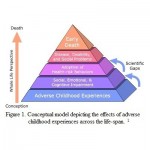Political Mindfulness: Casting a Vote While Maintaining Serenity
One of the most desirable fruits of the recovery process is a greater sense of serenity and peace. Yet, for those who are recovering from addiction and trauma, each day can bring challenges, both large and small, to one’s sense of serenity. Encountering opinions that are different from our own, especially when they bring our own values and beliefs into question, can certainly stir powerful emotions and threaten our serenity.
In the United States, we are nearing the end of a long political season, yet the grueling presidential election process is bound to bring even more opportunities for personal and interpersonal friction. Nevertheless, it is important that we remain involved in the political process and take part in civic duties. The question is do we let politics rob us of our serenity? And if our intention is to maintain serenity, how do we go about doing that?
Recently, I was faced with this very question when I received a politically charged email from an acquaintance. Fortunately, in that moment, I found just enough space and serenity to write my feelings down (instead of shooting off my mouth). My own political views and those of the email’s author are not important, no matter where we stand on the political spectrum we will face moments when our serenity is challenged. Here is my written response in the moment that my serenity was on the line:












